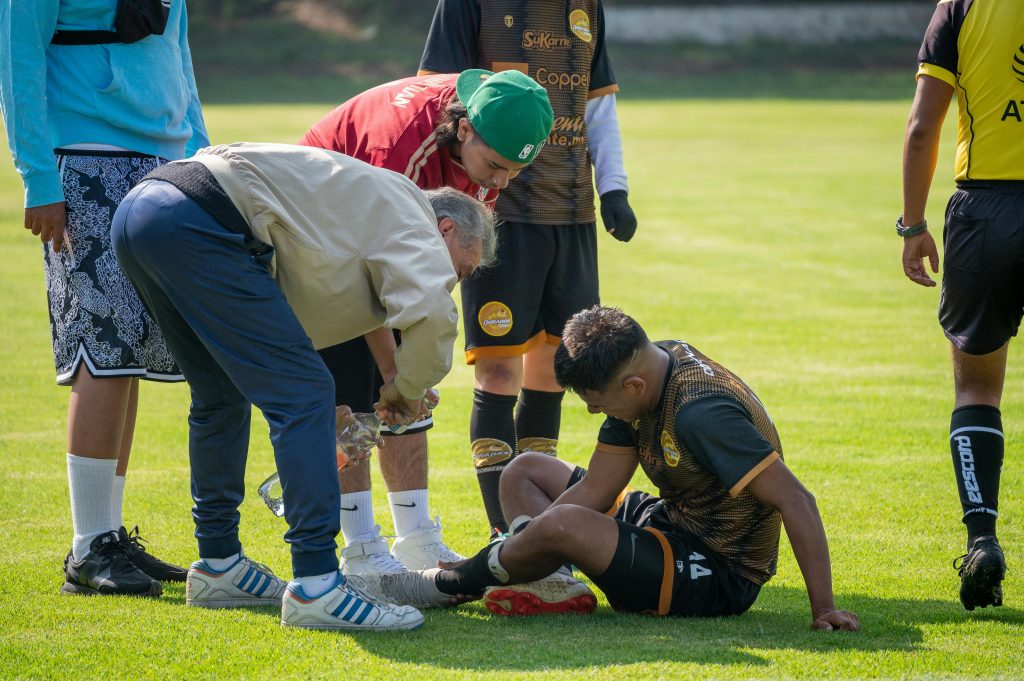- Professional guidance, structured rehabilitation, and proper nutrition are essential for managing athletic injuries.
- Maintaining a positive mindset and staying involved with the sport can aid mental recovery and prepare athletes for a seamless return to action.
- Prevention strategies such as warm-up routines, strength training, and proper equipment use can help minimize the risk of future injuries.
- Paying attention to technique and form during training and competition can also reduce the chances of injury.
- Resilience and a proactive approach to recovery are crucial for overcoming athletic setbacks.
Whether you’re an amateur enthusiast or a seasoned professional, athletics demands physical prowess and an indomitable spirit. Setbacks, injuries, and other hurdles are inevitable in the athletic experience. However, not the setbacks but how we manage and overcome them truly define our athletic journeys. This article dives into effective strategies for managing athletic setbacks, emphasizing the importance of resilience and a holistic approach to recovery.
How Injuries Happen
Sports injuries can arise from a myriad of causes. Overuse, accidents on the field, or improper technique can all lead to time away from the game. The impact of these injuries isn’t just physical; athletes often face significant mental and emotional challenges as they work toward recovery. Typical injuries might include strains, sprains, fractures, or even chronic conditions that develop over time.
This also highlights the importance of proper conditioning and training techniques. A well-rounded fitness program that focuses on strength, flexibility, and mobility can help prevent injuries from occurring in the first place.
Tips for Managing Athletic Injuries

There are many strategies for managing athletic injuries, and the approach may vary depending on the severity of the injury. However, some fundamental principles can help guide athletes through their recovery journey.
Seek Professional Help
The first step in effectively managing an athletic injury is to consult healthcare professionals. Accurate diagnosis and a tailored treatment plan are crucial for efficient recovery. Professional guidance not only helps the athlete physically recuperate from the injury but also provides psychological reassurance
An accurate sports injury treatment plan may include rehabilitation exercises, medication, and even surgery in some cases. It’s essential to follow the treatment plan carefully and communicate any concerns or changes in symptoms with your healthcare provider.
Follow a Structured Rehabilitation Plan
A personalized rehabilitation program is the backbone of recovery. This plan, often developed by a physical therapist, includes specific exercises and milestones to aim for. Adherence to this regime, andpatience,significantly bboostthe chances of a full recovery.
Focus on Nutrition and Hydration
Nutrition and hydration play pivotal roles in healing. A balanced diet rofproteins, vitamins, and minerals supports tissue repair and overall health. Staying hydrated is equally important, as water aids iutrient transport and waste removal. Certain supplements, as ra professional recommends can further aid the recovery process.
In addition, avoid consuming unhealthy foods such as processed and high-sugar items., that may hinder healing A well-rounded diet is essential for optimizing athletic performance and preventing future injuries.
Maintain a Positive Mindset
The path to recovery is often fraught with frustration and setbacks. Developing mental resilience is key. Techniques such as goal setting, visualization, and positive self-talk can help maintain motivation. The support of family, friends, and teammates is invaluable in keeping spirits high.
Stay Involved with the Team
Remaining engaged with your team, even when sidelined, can have therapeutic effects. Attending meetings, strategy sessions, or even supporting from the stands helps maintain a sense of belonging and purpose. This involvement not only aids mental recovery but also keeps the athlete informed and ready for a seamless return to action.
Remember, you may be injured, but you are still an important member of the team. Being around the sport you love can be a great source of motivation and inspiration and will help you stay focused and maintain a positive attitude toward recovery.
Prevention Strategies to Minimize Future Injuries

Preventing future injuries is as important as managing current ones. Implementing proper warm-up and cool-down routines, engaging in strength training and conditioning, and using appropriate equipment can all reduce the risk of injury. Paying attention to technique and form during training and competition is equally critical.
Final Thoughts
Athletic setbacks are challenging but surmountable obstacles. By seeking professional guidance, adhering to a structured rehabilitation plan, focusing on nutrition and hydration, maintaining a positive mindset, and staying involved with your team, athletes can effectively manage these setbacks. Additionally, adopting prevention strategies can help minimize the risk of future injuries. Remember, resilience and a proactive approach to recovery can make all the difference in your athletic career. Stay strong, stay motivated, and keep pushing forward.




